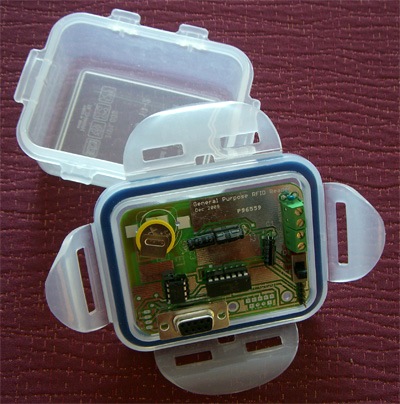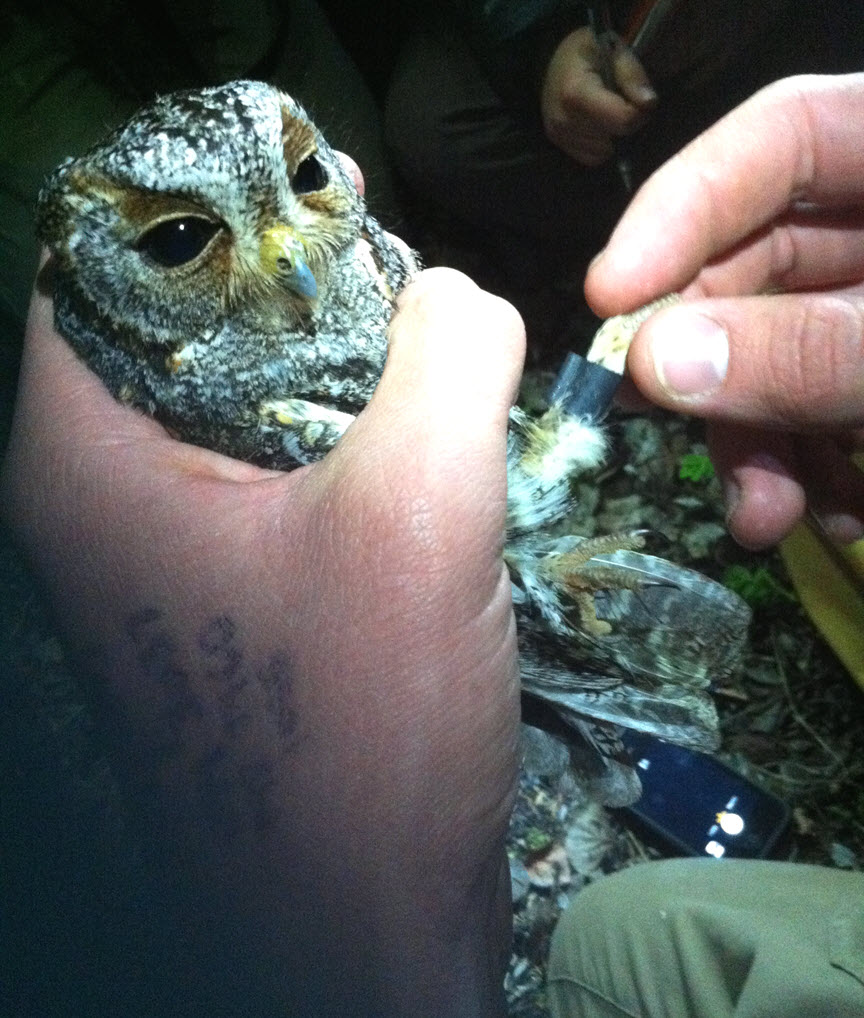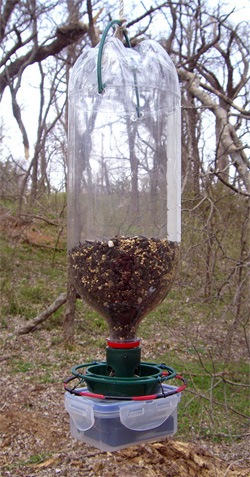- Animal tracking tags are often costly and heavy, precluding their use with small-bodied species.
- RFID readers record presence of animals bearing tags with unique ID numbers, so are useful for nesting or denning animals or others returning to known locations.
- Researchers have developed a low-cost, do-it-yourself passive RFID tag that can help monitor movements of small animals among fixed reader stations.
Last month, we highlighted wildlife tracking hardware and software that allows near-real-time monitoring of tagged animals, through frequent GPS location data and spatial algorithms that learn an animal’s typical behavior and alert researchers to a sudden change in movement speed or location.
However valuable such data are, researchers that study the behavior of individual animals often must infer findings from the activity of small study samples due to the high cost of tracking technology. GPS tags also require substantial (i.e. heavy) batteries, limiting their use for birds and other small animals.
As an alternative for researchers on tight budgets, Dr. Eli Bridge at the University of Oklahoma has developed a customizable Radio Frequency Identification (RFID) reader that you can build yourself at a very low cost. RFID reader systems identify and monitor the movement of people, animals, or items bearing tiny tracking tags by checking for the presence of tags at various reading stations, recording the tag’s unique identification number, and logging the data until they are downloaded.

Commercial applications of RFID technology have been common since the 80’s – it is found in badges worn by medical or security staff, electronic toll readers, and hotel or office entry key cards. Only recently have scientists begun to apply RFID to wildlife research beyond merely mark-recapture purposes. Bridge has created a website that provides information and instructions to build the reader system, ranging from a list of parts to a complete circuit board design and accompanying instructional videos. The website is directed specifically at animal researchers with limited budgets.
“People are sometimes surprised when I say that I started with no engineering background and figured out how to build an RFID reader by surfing the Internet,” said Bridge. “But that sort of thing is becoming commonplace. I’ve corresponded with several people, also non-engineers who have done the same thing.”
How does the RFID work?
RFID technology requires three main components: a uniquely identifiable tag, a reading device with an antenna, and software. A passive integrated transponder (PIT) tag is activated as it comes into contact with the electromagnetic field created by the antenna. When the tag passes near a reader, it is activated to send its unique alphanumeric code to the reader module that is then stored in a memory chip.
The system uses radio waves to capture data from the tag, so while the tag must be relatively close to the reader to be recognized, it doesn’t need to be in line of sight.
Use in the field
To integrate this technology into a biological study, a researcher attaches the tag to an animal and places the tag reader in a spot that is regularly and reliably visited by tagged individuals, such as a nest, den, or birdfeeder. The researcher sets the amount of time the unit will spend reading (probing the antenna’s range for a tag) and resting (intervals in between read attempts) to best balance the collection effort and energy use. The more time the system spends reading, the more battery it will use. If you are placing the antenna at the entrance to a nesting cavity where birds typically pass by through quickly, intervals will have to be set shorter. If you are looking at tortoise movement through culverts, you will have a little more time!

Although Bridge and his colleagues designed this do-it-yourself reader with birds in mind, it can be applied to a wide range of taxa. The tag does not require batteries and so is both lightweight and has a theoretically unlimited lifespan. Its biggest constraint comes from the small antenna size (approximately 12 cm) and short reading range (10 cm), though these values are comparable to off-the-shelf models, such as these and these, that would cost between several hundred to several thousand U.S. dollars and are less customizable to situations in the field. Bridge’s system is field-ready, costs about $40 per unit before recurring costs, and can be integrated with a solar panel to reduce battery expenses.
Once installed, the system runs by itself, aside from replacing batteries and downloading data. Depending on the data collection settings and the batteries you use, revisits to the reader can be as infrequent as once a week.

After you have installed the system and properly attached the tags to your study subjects (Bridge’s website details the steps required to attach the tag to birds), you can start (autonomously) collecting data on the presence of tagged individuals at your sites of interest that are very easy to analyze with limited field maintenance.
RFID-enabled feeders for bird research
Bridge and colleague David Bonter used these systems with a network of bird feeders in New York and logged a total of 500,000 visits over 5 months. The patterns of these visits indicated some specific-specific movement patterns, as well as variability among individuals (certain individuals visited certain readers frequently, while some traveled relatively long distances between tag readers, suggesting emigration).
The design also offers a range of plug-and-play options, allowing the reader to integrate with various environmental sensors, a camera, or a scale that takes weights autonomously. These allow researchers to compare feeding times and rates with environmental variables.

Bridge has used his own design creatively in various studies: in one study, he integrated the technology into a smart bird feeder that fed only certain tagged birds to investigate effects of variable food supplementation within a family group. Bridge’s team attached the PIT tags to nesting individuals within a population of birds and deployed a set of feeders that each had an RFID reader and antenna at the base. When a tagged bird landed on the feeder, the reader would identify the bird from its ID number and then dispense food only to certain family members – males, females, or helpers.
By controlling food availability for these three groups, the research team could infer the respective contributions of birds in these different roles to the rearing of young. When they then assessed nestling condition, they could also deduce which family members contributed most to success with or without the supplemental feeding.
The open-source nature of this device requires some initial effort to build and then troubleshoot in the field, but with RFID technology improving rapidly, these devices hold great potential for broader application. By offering a form of tracking animal movements for researchers on a tight budget, they allow for greater collaboration and therefore impact across studies and institutions.
The Bridge reader has now been used on a wide range of species including wood ducks, hummingbirds and sociable weavers, investigating a myriad of topics. I’m really excited about the ongoing push for STEM education, and I think open-source and inexpensive technology is going to contribute a lot to the next generation of innovators and scientists, says Bridge. I’ve never made any money from the RFID readers, but it’s been really worthwhile to see all of the interesting projects that have emerged as a result of keeping the technology free and open.
Citations:
Bonter DN. and Bridge, ES. 2011, Applications of radio frequency identification (RFID) in ornithological research: a review. Journal of Field Ornithology, 82: 1–10. doi: 10.1111/j.1557-9263.2010.00302.x.
Bridge ES and Bonter DN. 2011 A low-cost radio frequency identification device for ornithological research. Journal of Field Ornithology 82, 52–59. doi:10.1111/j.1557-9263.2010.00307.x.
